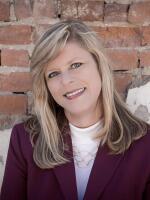The Ohio Supreme Court has struck down the property-tax based funding method four times in the last 22 years. Now two lawmakers say they think they’ve finally fixed it with a new school funding formula they say is stable, customizable and transparent.
Right now, the formula starts with $6020. That’s the figure school funding expert Howard Fleeter said the state has selected to represent how much the state and local districts spend to educate a student in Ohio. And that number goes up or down depending on property wealth and income.
“The poorest districts in the state right now get 90 percent of that paid for by the state. The wealthiest districts get 5 percent," Fleeter said.
But of course that’s not the final number.
Money is added in by the state to help poor students and to help pay for transportation, special education, K-3 reading and career tech, and there’s money for economically disadvantaged students, gifted kids and those with limited English. And there are also performance bonuses.
But even with all that added in, that’s still not the final figure. And Rep. Bob Cupp (R-Lima) said that means the formula doesn’t work.
“Overfour-fifths, 82percentofdistrictsareeitheronacapwhichlimitsthefundingtheywouldgetundertheformulaoraguaranteewhichpropsupthefundingthey'renotgettingovertheformula," Cupp said.
Cupp and his Democratic colleague John Patterson of Ashtabula have been working for more than a year on a new funding distribution formula, along with more than a dozen public school officials.
Patterson said a major difference is that their formula calculates a local district’s share of education costs based 60 percent on property values and 40 percent on income.
And Cupp said their formula is customized based on a set of student-teacher ratios that gets smaller as students get older.
Every analysis of school funding has shown an achievement gap between richer and poorer districts. Patterson said to get at that, the plan increases funding for economically disadvantaged students by 60 percent.
“Now the question is, is 60 percent enough? We didn't want to overfund it. But we do know that is currently underfunded. So we tried to pick a figure that was practical that was explainable essentially as a place holder until a more robust study could be undertaken," Patterson said.
But both lawmakers admit they don’t have a definition of what economically disadvantaged actually means.
The formula also emphasizes local control, which means districts can decide how to spend their money. But it seeks to make sure all low-income four year olds have access to high quality preschool and to improve transportation by replacing 10 percent of buses every year.
The real question is – how much money will this distribution plan need to work? Hearings are scheduled on the plan this week, with a final rollout of costs on Friday.
Cupp said the concept needs to be discussed before a dollar figure is put on the plan, but he says it will mean more money.
“We have a pretty good idea, but we’re still working on it. We don’t want to throw a number out there until we have, so….you’ll get a range on Friday," Cupp said.
The plan also includes direct funding of charter schools, instead of that money being taken from districts when students leave and enroll in charters.
Teachers’ unions and other education experts say since the current formula isn’t working they’re cautiously optimistic. But advocates say lawmakers will have to commit to fully funding this idea for it to work.
Copyright 2019 The Statehouse News Bureau



